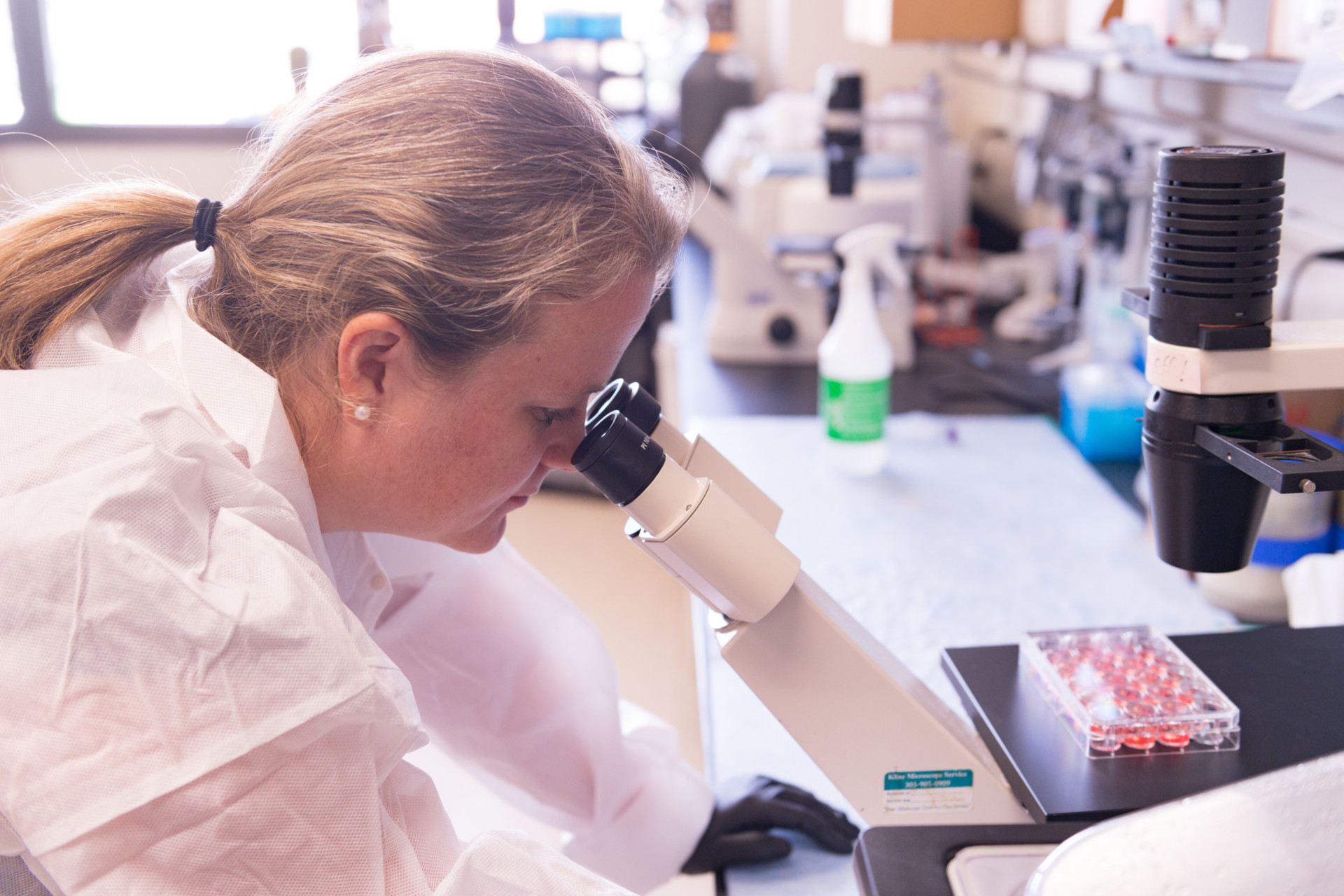
Assistant Professor Julie Moreno said having donor support for her research helps keep her going. “People who have been affected
by things like Creutzfeldt-Jakob Disease need us to try to find a cure for these diseases.” Bill Cotton/CSU Photography
Two multimillion dollar gifts brought the State Your Purpose campaign to its billion-dollar goal early.
Yet gifts come in large and small packages. In fact, more than 70 percent of the campaign gifts were less than $250, but together they add up. Gifts given in support of research can make the difference for the projects, students, and scientists that make Colorado State University the great research university that it is.
Here’s a look at some of those important gifts that mean so much. And, as one researcher said, “Even your small donation can help us. You don’t have to be wealthy to help science.”
‘I was changed as a researcher’
Assistant Professor Julie Moreno was first connected with a donor when she took part in a fundraising walk to benefit the Creutzfeldt-Jakob Disease Foundation in Fort Collins in 2015. Moreno studies the disease in Professor Glenn Telling’s laboratory in the Department of Microbiology, Immunology, and Pathology at CSU.
Creutzfeldt-Jakob Disease falls under the umbrella of prion diseases, a group of rare and fatal brain disorders that occur in both humans — think Alzheimer’s and Parkinson’s — and animals, like deer and elk, which can contract Chronic Wasting Disease.
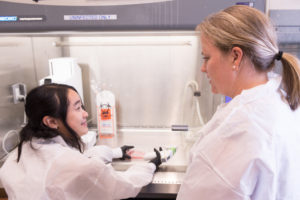
While on that fundraising walk, Moreno met five families who had lost a loved one to Creutzfeldt-Jakob Disease. It was an eye-opening experience for her.
“When you work in a lab, you work with cells or mice or tissues and you don’t actually get to work with patients who have the disease,” said Moreno. “I was able to see the people that my work could help one day.”
After they met on the walk, Becky Bunde, who lost her first husband to Creutzfeldt-Jakob Disease, visited Moreno in her lab. Turner quickly realized CSU’s prowess in this research realm; the Prion Research Center is a world-renowned leader in the field.
She subsequently made an initial donation of $2,500 to support the Prion Research Center and has added to that in recent years with additional gifts. Bunde has also included a gift earmarked for the center’s research in her will.
“Having this relationship with Becky and having her support is so huge for me, it helps me keep going,” said Moreno. “People who have been affected by things like Creutzfeldt-Jakob Disease need us to try to find a cure for these diseases. It is a rare disease, but it isn’t ‘rare’ for people like Becky.”
‘It just means so much’
Breanna Wenck, a senior in the College of Natural Sciences, is the recipient of the Marilyn and Ron Tuttle Undergraduate Research Scholarship, which was established and endowed in 2013. The scholarship provides $1,500 in support each year for one student.
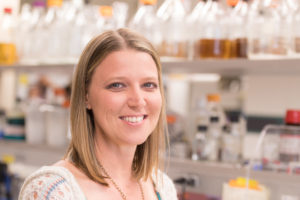
Wenck, who at age 37 is a nontraditional student, is a researcher in the lab of Tom Santangelo, associate professor in the Department of Biochemistry and Molecular Biology. She studies archaea, one of the three domains of life, which was first characterized in the 1970s. (The other two domains are bacteria and eukarya.)
Archaea can live in extreme conditions, so studying these organisms can provide clues about life forms that might exist on other planets. They can also potentially be used as biofuels.
Wenck becomes emotional when asked what this support means to her. She dropped out of high school when she was 17 and said she thought she wasn’t as intelligent as her peers when she was younger. She is a wife and a mother to three children, one of whom is enrolled at Front Range Community College.
“To have people care so much to give you the opportunity to be great, to do amazing things and to have that faith in you that you didn’t have in yourself, it makes you start to see that you can be great,” she said.
Wenck said that she feels “so very fortunate” to be a part of a community of researchers discovering new things about life on this planet. “That information can be used by future generations to better humanity and get a deeper appreciation for the complexity of life.”
She also serves as a peer mentor for the Bridges to Baccalaureate Program, a partnership between CSU and Front Range Community College to help students transition from community college to four-year institutions.
‘It has transformed our program’
The Siegele Conservation Science Internship currently supports six students every summer to work on projects through the Colorado Natural Heritage Program, part of the Warner College of Natural Resources. The Siegele internship program was launched in 2016 and has received more than $125,000 in support to date.
Students in this program have the opportunity to take part in activities like a bioblitz, where they help to conduct a rapid species inventory, typically over a 24-hour period, in a national park or natural area. During a bioblitz, scientists make observations and teach students about study methods as they all gather data.
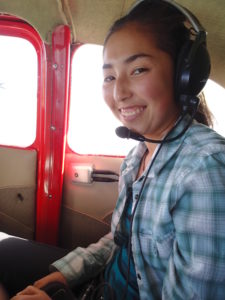
Kira Paik, a recent CSU graduate and former Siegele intern, said taking part in the program was incredibly valuable.
“It not only provided us with the opportunity to get experience in the field conducting research, but it also provided us with funding, which is not always the case for internships,” said Paik, who is now working with Colorado Parks and Wildlife. “The data I was helping to collect also became my honors thesis. The program taught me important field techniques and proved to me that fish and wildlife is the field I wanted to go into.”
David Anderson, chief scientist and director of the Colorado Natural Heritage Program, said the donor support for these internships has “transformed” the program.
“We have realized what a gift it is to have students helping us in the field,” he said. “Their enthusiasm and curiosity are really infectious. It’s changed us in ways we didn’t even expect, this process of bringing young, enthusiastic people into the conservation world, connecting them to the amazing wonders of Colorado, including all the rare plants, rare animals, and all of our natural heritage.”
‘Essential to my work’
People love animals, including elephants.
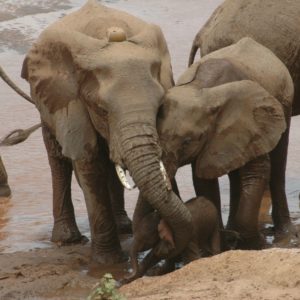
Since 2011, more than 60 donors have contributed $323,556 to support elephant conservation research conducted by George Wittemyer, associate professor in the Department of Fish, Wildlife and Conservation Biology in the Warner College.
He is known as one of the top researchers in the world working in this realm. Wittemyer was the lead author of a landmark study published in 2014 that found an estimated 100,000 elephants in Africa were killed for their ivory between 2010 and 2012.
“These small gifts have been essential to my work, particularly the efforts focused on elephant conservation,” he said.
The funding he’s received covers a variety of needs, from basic field expenses in Kenya to the purchase of components for new technological solutions for anti-poaching work.
It all started at the symphony
CSU researchers are trying to find ways that cognitive and functional ability can be improved in people with dementia and other aging adults through the use of engaging environments.
This research team grew out of initial data from a study that is now known as the B Sharp Arts Engagement program. In the program, people with dementia and their caregivers were given passes to five concerts by the Fort Collins Symphony.
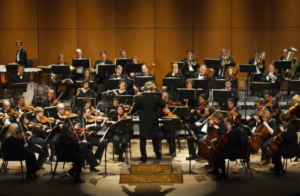
The B Sharp study’s promising results led to research that is now underway in the “Enriched Environments for the Healthy, Aging Brain” project, part of the Catalyst for Innovative Partnership Program funded by CSU’s Office of the Vice President for Research. The project includes researchers from the Colleges of Natural Sciences, Liberal Arts and Health and Human Sciences.
B Sharp also led to the creation in 2015 of Dementia Friendly Communities of Northern Colorado, a nonprofit dedicated to leveraging and providing education and programs which promote well-being for people living with dementia.
The cost of the program each year is between $28,000 and $50,000, including symphony tickets and research expenses.
In 2016, more than 30 donors contributed $9,740 to a crowdfunding campaign. B Sharp has raised $72,000 to date over four seasons of the symphony. These donations cover symphony tickets, room rental, and receptions for those taking part in the research.
“Every contribution, regardless of the amount, matters not only to further research, but to create well-being for others — one experience, one person, one moment at a time,” said Cyndy Luzinski, founder of Dementia Friendly Communities of Northern Colorado.
The perfect match
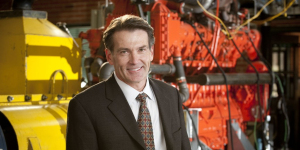
Big gifts can also propel significant research. The Bohemian Foundation provided a $6 million gift to CSU in 2017 to create the Bryan Willson Presidential Chair in Energy Innovation.
Willson arrived on the Fort Collins campus more than 25 years ago to teach design in the College of Engineering. His students, and a passion for energy research, led him on a journey of discovery to find cleaner and more efficient ways to power our world.
He and a team of faculty, researchers and students worked together to create the Engines and Energy Conversion Laboratory, transforming the former municipal power plant in Fort Collins into a hub for innovation. The complex has since evolved into the Powerhouse Energy Campus, where vision, innovation and business acumen come together to move technology to market, so it can benefit the world.
In 2002, Willson was seeking financial backing for a project he believed could change the world, while leadership at the newly formed Bohemian Foundation in Fort Collins was looking for opportunities to support a project that would change the world.
A powerful partnership was formed, and Envirofit became a reality.
“Bohemian Foundation became the first funder for Envirofit, but they were doing more than just writing checks,” Willson recalled. “They were mentoring us in how to form a successful business. We made a lot of mistakes along the way, and Bohemian was a very patient funder. Ultimately that patience has really had an impact on the world.”
The State Your Purpose campaign will continue through the university’s 150th anniversary in 2020. To learn more about opportunities to support research or any area of CSU with your gift, of any size, go to giving.colostate.edu